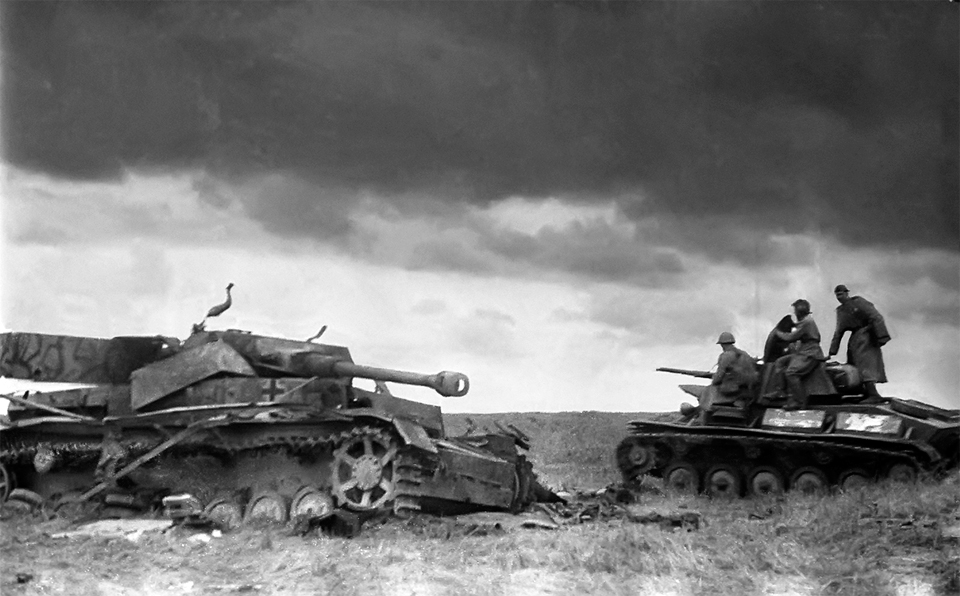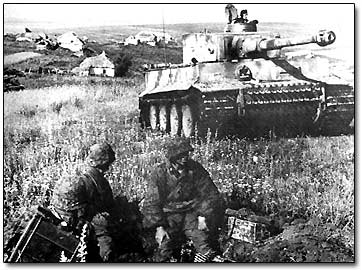Soviet Union: Battle of Kursk

Kursk (1943)
Background: After the major defeat at the Battle of Stalingrad and the loss of Army Group B, Hitler and the Nazis were trying push a counter offensive to push back the Russians in the summer of 1943. Hitler and his generals then created an offensive plan called Operation Citadel, which would amass the largest armored force Germany ever assembled on a battlefield. The German hopes were that they would be able to weaken the Soviet offensive coming in the late summer. The Germans anticipating the amass of Soviet troops would be at Kursk chose that field of battle to decide the rest of the Eastern Front. If the Germans would grab victory at Kursk, they would be able to relieve the strain of the over stretched forces along the Eastern Front.
Purpose of the Battle: The overall purpose of the Battle of Kursk for the Germans was to destroy as many soviets as they could to try to slow down or stop the Soviet counter offensive. For the Soviets this battle meant as much as Stalingrad, if they lose Germany will have the offensive advantage and they will be again pushed backed for winter.
The Battle: The Battle of Kursk started in July from the Germans on the southern part of the town of Kursk. The German charged the soviet positions to gain the high ground for artillery positions before the tanks would move in. On July 5th the General of the Soviet Union decided to bombard the northern positions of the Germans hoping to catch the Germans off guard, but the bombardment failed to disrupt the Germans or cause the Germans to sustain many casualties. The Germans then began their pincer movement on the soviet positions sending in their heavy Tiger tanks and Panzer tanks. Both pincers pushed and drove to Kursk trying to cut off the Soviets and causing the soldiers trapped in the center to surrender. The Southern Pincer had high success and pushed deep into the soviet positions causing the Russians to almost retreat completely from the battle. The Northern Pincer had a harder time pushing to Kursk because at first they had to clear many minefields laid by retreating Russians. After the clearing of the minefields the Germans continued there push onward, but by July 10th the German assault was stopped because of a renewed Soviet counter push and artillery bombardment. The Southern Pincer, after a very successful push so far experienced the worst part of the Battle of Kursk which was the Battle of Prokhorovka. This battle occurred when the Soviet 5th Guards Tank Army attacked the II SS-Panzer Corps on the eastern side of the Pincer. The biggest tank battle occurred that day and in the end the Russians pushed back both Pincers to where they were before the battle started. By August, the Soviet position was reinforced and began there counter offensive where they would win the Battle of Kursk.
 Picture of a Tiger Tank
Picture of a Tiger Tank 
Soviet Soldiers firing upon German aircraft
Aftermath: After the battle concluded the Soviets gained a decisive strategic victory over the Germans. The main reason why that the Russians won the battle is because the Russians outnumbered in tanks the German tanks. Over 1,600 Soviet tanks were destroyed during the battle to the only 600 tanks of the Germans. With almost all of the German armor destroyed in one battle the Soviets from 1943 and on to 1945 were able to defeat the the Germans and win World War 2.
 Map of the Battle
Map of the Battle
Commanders: Erich von Manstien- Axis
Hans Kluge-Axis
Georgy Zhukov-Russian
https://www.youtube.com/watch?v=kTbCLYFF2eg Video of the battle of Kursk
http://www.history.com/topics/world-war-ii/battle-of-kursk
http://www.thedailybeast.com/articles/2013/08/31/wwii-s-greatest-battle-how-kursk-changed-the-war.html
http://www.battleofkursk.org/
Wow Neat!
ReplyDelete